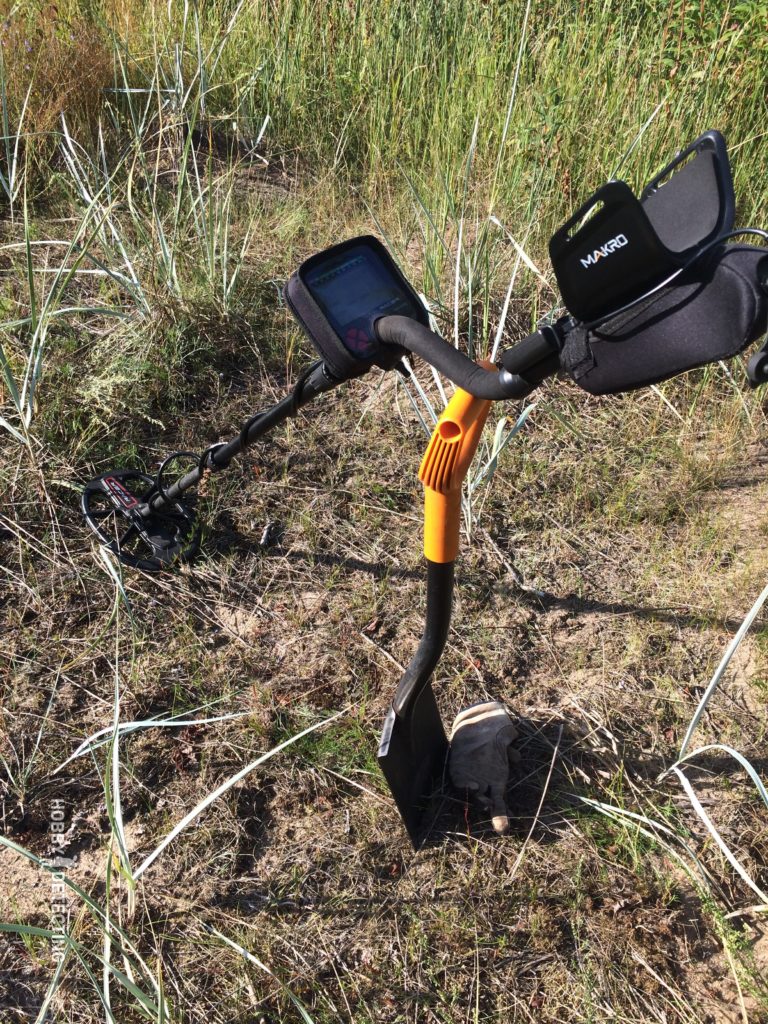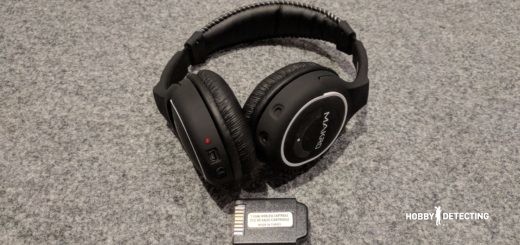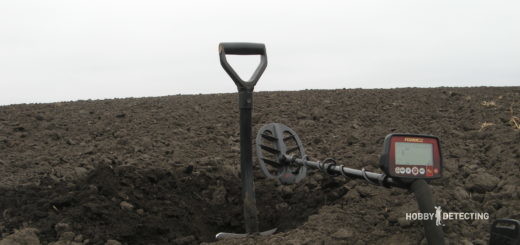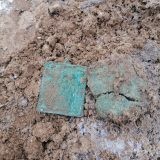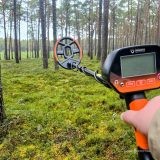Makro Racer 2 – A Real Coin Vacuum Cleaner (Summary Of The Season, Review, Photos+)
Our fellow detectorist Welt recently sent us his experience of working with the metal detector Makro Racer 2. I remind you that each of you can send your review or diggers story, along with photos of finds, thoughts and so on. I and other fellow diggers will be very interested to know about your experience! But, back to the review:
I want to share my opinion about the Turkish detector Makro Racer 2, or simply the “Racer”. This is the second professional level detector I’m testing – the first was Minelab Safari, which to be honest, did not work out for me, because of its slow work, I prefer dynamic detecting. I will remind you that I myself use the metal detector Fisher F44 as the main one, but back to the “Racer”.
I will not describe the technical specifications of this detector, I will only say that this is a high-frequency detector operating at 13 Hz. It feeds on 4 AA batteries, which is enough for somewhere around 7-8 full detecting trips on average when working in headphones, each of which is 4-5 hours of continuous detecting. The first impression I got from this detector was the quality of performance and a pleasant balance of weight, you can walk with it for a very long time and the hand will not get tired too quickly. The display is large, with adjustable backlight, and the VDI figures are very clearly visible. The Makro Racer has a trigger, and it turned out to be a very convenient thing: you press the trigger towards yourself, and you are in the pinpoint mode, which by the way is very accurate. However, if you press the trigger away from yourself, you will turn on the automatic ground balance. This is the same trigger system as in the Fisher F75 if you know it. After ground balancing, the detector will notify you by squeaking that the balance has been fulfilled. This can also be convenient for those who dig at night and do not use the backlight. By the way, as I understood it, one of the concepts of the Racer is the convenience for night detecting: it has a built-in flashlight, the bar stick vibrates when a target is detected and the backlight turns on if the target hits the coil. Useful for night detecting!
Now, from theory to practice. I borrowed this detector from a friend for three months to feel the difference between an average detector (Fisher F44) and a professional. After receiving the detector, I did not go into the menu too closely and read the manual, but immediately went detecting. For the first test, an old forest path was chosen, as it later turned out, very littered with modern garbage. Something was ringing in the headphones, and the VDI also showed good targets, but I only dug out cans and other rubbish. A friend with my Fisher found a pair of coins from there. Since I was digging for the first day with this detector, I did not have too much disappointment, just bad luck that day, and with the settings, I still needed to understand it, a detector of a different level than my Fisher, accordingly, and more advanced settings in it, too. After studying the manual and looking a little bit on YouTube, I set up the detector, as shown in the video. The Racer had memorized the settings in each mode, and there are five of them: all metals, two tones, three tones, a beach and a deep mode, each mode is really unique, and not just limited to discrimination and chosen for a particular place of search.
After studying the detector and tuning it, I chose the beach as the next testing place to understand the Racer in calm and comfortable conditions. The result did not take long to wait – I have never found so many coins at a time on any of our beaches with any detector, maybe the beach is not very detected, but it surprised me that the coins were found on a very good depth and the fact that the Racer caught such small particles of non-ferrous metal. I went, of course, also with the Racer to the fields, and the results were always pleasing: the detector worked very stable, a quick response to the targets, decent depth, an excellent separation of nearby targets and very good discrimination.
Now about what did not like or, maybe, what was misunderstood or I was not used to. I did not like the sound of the detector. The racer is a very chattering detector, and when you walk in the recommended mode of the racer user mode two tones, then in this mode it sees deeper, but you quickly get tired of all these sounds and each time you have to look at the number of VDIs, and since I often practice a night detecting, and this is when all the finds are determined only by hearing, then in two tones you, it turns out, simply dig all the good sounding signals! In the three-tone mode, it is more comfortable, but the depth is somewhat lower, and in our times the depth is the most important factor of detecting. Deep depth mode requires slow swinging of the coil and thoughtful detecting.
Let me summarize my impressions of the Racer. This detector is worthy, both for beginners and for professionals. It is suitable for various detecting purposes, it perfectly sees small silver and bronze coins at a decent depth. A man more or less familiar with metal detectors will easily understand it since the menu for a professional detector is not at all complicated, I will say so – there is nothing superfluous in it. Once you have adjusted the basic parameters and on site, it will only need to be ground balanced, and you will get finds even in very detected places.
Good luck detecting!
All the reviews on metal detectors we collect here, and more about Macro Racer 2 can be found here.


